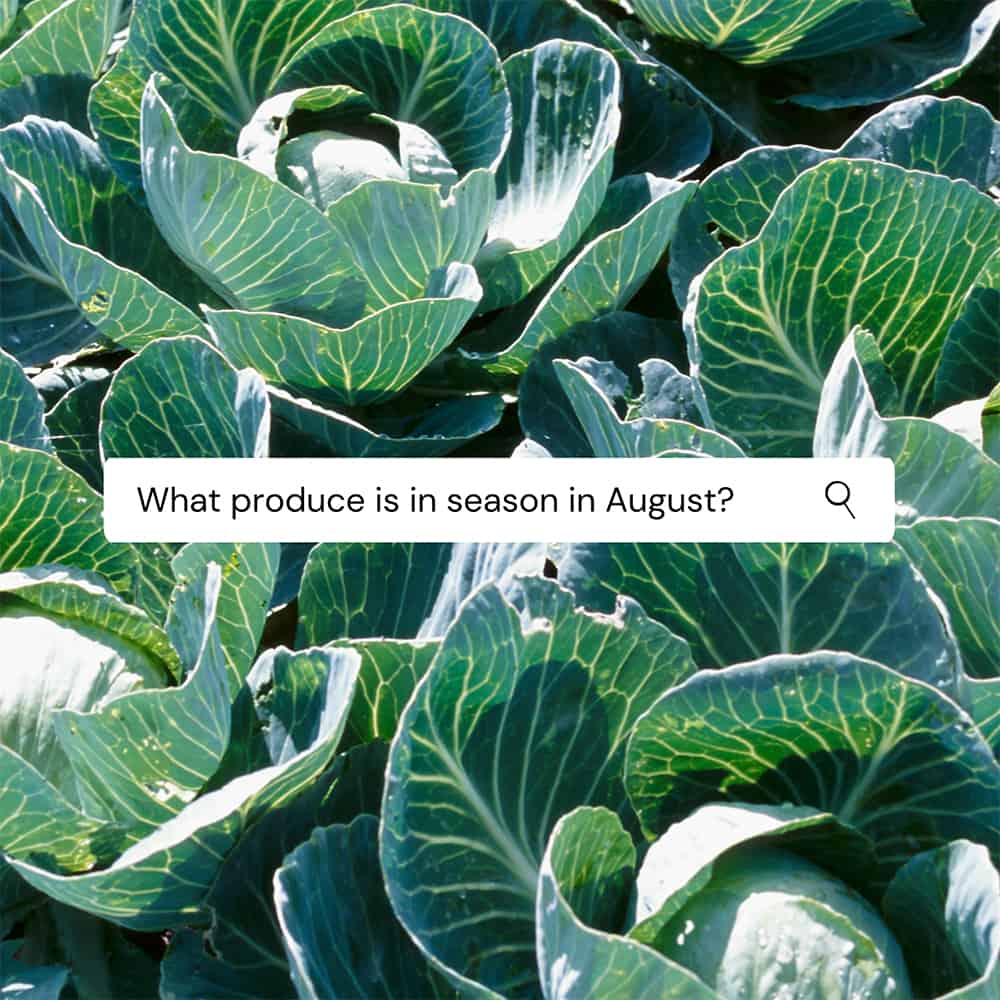What’s In Season in August
There’s nothing that says summer quite like fresh corn, cherries, and blueberries. If you’re fortunate enough to live in the lower mainland of British Columbia, watch for fresh local produce to pop up at roadside stands in early August. This month also offers a berry bonanza and a host of other delicious treats to round out your recommended daily eight fresh fruits and veggies. Here’s a quick rundown of the fruits and veggies in season in August and where to find local farmers’ markets.

Fruits and veggies in season in August
The onset of true summer, with its 30-degree heat and long, laid-back days, has hopefully kicked any slow-to-grow plants into high gear in your garden. August brings with it many of the first stone fruits, like peaches, plums, cherries, and apricots, followed later in the month by nectarines, at least in British Columbia. They arrive later in the month in the Prairie provinces, and should be bursting with flavour by September in the Atlantic provinces.
Some heritage varieties of apples and pears also emerge in August, as well as melons and kiwis.
And on the west coast, where I am, the first few blackberries are now ripe and delicious, with thimbleberries and wild raspberries and blueberries also in season. If you have a bountiful harvest, spread a layer of berries on a cookie sheet and freeze in batches, then transfer to reusable freezer bags for later use in pies, crumbles, and smoothies. You can do the same with the first grapes of the season, as well as gooseberries, currants, strawberries, and rhubarb (just chop the rhubarb into chunks first).
As for vegetables, get ready for fresh tomatoes, zucchini and summer squash, rapini, and corn, as well as the first eggplant and leeks of the season. Some mid-season potatoes are also ready to harvest (watch for the tops of the plants wilting and yellowing). If you’ve been patiently waiting for garlic since you planted in October, now’s the time to dig up the first fresh bulbs.
Brassicas are in season in August, including broccoli, cabbage, kale, and cauliflower. Salad crops are also in their prime, so enjoy some fresh celery and green onions, radishes, and salad greens, along with spinach. You’ll also spot chard, cucumber, artichokes, carrots, parsnips, rutabaga, turnips, green and yellow beans, and beets this month, making for a vibrant salad or roasted summer root veggie medley.
The benefits of eating local and seasonally
If you’re looking to limit your carbon footprint, buying fresh produce from your local farmers’ market is a great start. Eating locally grown organic produce also helps support your community and enhances food security for everyone. And, frankly, is there anything that tastes better than fresh Okanagan cherries or Chilliwack corn?
Fresh produce picked that morning is packed with beneficial nutrients and tastes far more delicious than produce that’s been shipped and trucked thousands of miles, languished in warehouses for months on end, and then been sprayed with rapid-ripening chemicals just before it hits store shelves. And, buying from your local farmers can help reduce single-use plastic packaging, further reducing your environmental footprint.
Buying local can help you reduce your greenhouse gas emissions by 4–5% – more if you walk or bike to the market. Regardless, increasing plant-based foods and reducing meat and dairy intake is, by far, the most effective way to reduce your environmental impact. If you have reluctant eaters in your family, build out your team with a visit to the farmers’ market. It’s one of those (in)convenient truths of parenting that if a genuine farmer offers your kids a chance to try a fun-looking veggie, they’re far more likely to try it than if you offer the same thing at home. What a great opportunity to expand your family’s palate!
Eating local also helps sustain a more robust, resilient local food economy, giving you something you can do right now to help businesses struggling to maintain their livelihood through the COVID-19 pandemic. Supporting your nearest small-scale farmers helps keep money in the local economy. And, because those farmers live and work where you do, it’s far more likely they want to adopt and maintain sustainable agricultural practices that reduce the risk of environmental degradation. This can mean cleaner waterways, less air pollution, and a generally happier and healthier environment.
Shopping at your local farmers’ market can also save you money! After all, the laws of supply and demand apply to local food too, meaning that it’s best to buy produce when supply is high during peak harvest season.
And don’t forget, in some provinces and territories, such as BC, farmers’ markets have nutrition coupon programs where lower income families, folks who are pregnant, and seniors can access vouchers to buy local, fresh food directly from farmers.
Where to find your local farmers’ market
If you’re new to an area or haven’t been to a farmers’ market before, ask friends and family to recommend a favourite market. You can also check with the local tourism board or regional district or city office, or see if there’s a local foodie group on social media that can point you in the right direction.
Many provinces also maintain a directory of local farmers’ markets, which can be found here:
Alberta
BC
Manitoba
New Brunswick
Nova Scotia
Ontario
Quebec
Saskatchewan
If you’re in Yukon, you can find details of community markets here.
August is a blockbuster month for fresh produce, so head to your local farmers’ market and stock up, then plan a physical-distancing picnic to remember!
.png)